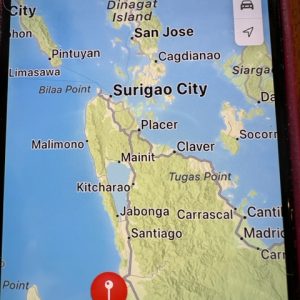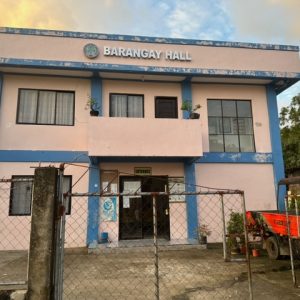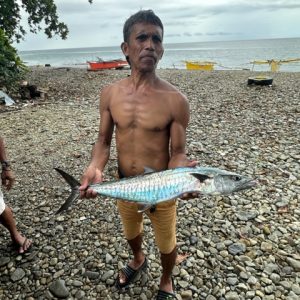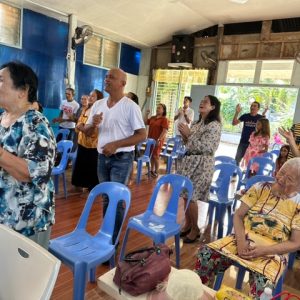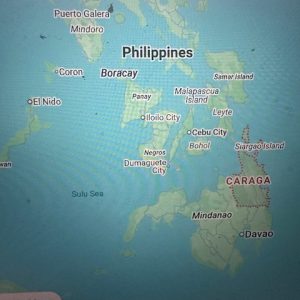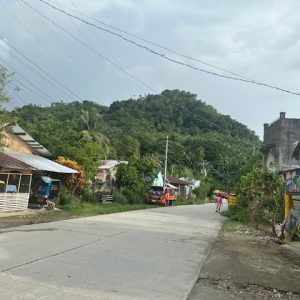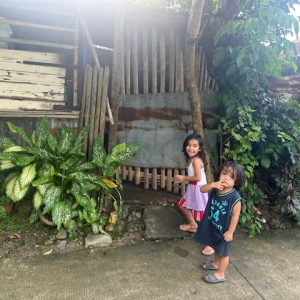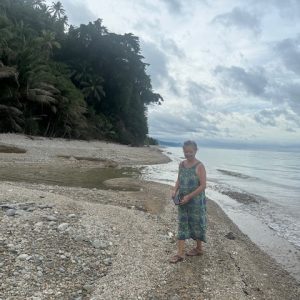Cansayong, Mindanao, the Philippines
First some history
Cansayong is a village (barangay) in the municipality of Malimono. It is located in the region of Caraga, occupying the northeastern section of Mindanao in the Philippines (see map).
Perhaps surprisingly, Cansayong is only a recent creation, being founded around 1865, by a young couple Maximo Curog and Domingo Bantilan who came from Inabangga, Bohol. They passed by Anao-aon (San Francisco) by boat.
Maximo Curog and Domingo brought with them coconut seedlings, banana suckers, camote cuttings, cassava sticks and even chickens and piglets. This created the foundation of the Cansayong economy. Next to come were the families of Macario Sansano and his Mother, Baltazar Apac, Leon Sandigan and Pelagio Quinto. They comprised the next wave of settlers coming from the Island of Bohol.
At the time, many trees called BALAO grew along the shores of Cansayon and even at the foothills of the mountains. When these trees were cut down, they produced thick liquid which the settlers used to patch holes on their fishing boats and other wooden vessels. They also used this liquid as a torch for fishing during night time. The importance of this liquid known as “Sayong” encouraged the settlers to name this place, Cansayong. Sayong is known in Bohol as Sawong or Saong.
Visiting Cansayong
My dear wife was born in Cansayong. Some members of her family are among the 1500 people living there now, including her mother (indeed, most people in Cansayong seem to be related, one way or another). Paulita is enjoying her golden years in this peaceful village, which is nestled between the Mindanao Sea and the sharply rising mountains, covered in tropical vegetation.
I always enjoy visiting Cansayong, firstly to visit Paulita. But also to enjoy the simple traditional lifestyle. Cansayong may be much poorer than Manila, Cebu or Davao. But in most countries, rural regions are less well off than major urban centres.
Cansayong’s economy and governance
Cansayong’s economy is very much pre-industrial. The main activities are gold mining in the hills above the barangay, fishing, and agriculture (mainly coconuts and bananas). Commerce takes place in small convenience stores, known as “sari-sari stores”.
Mining for gold in the mountains behind Cansayong is one source of prosperity for the locals. However, this mining is typically conducted without regard for regulation. One consequence is soil erosion and flooding during the rainy season.
In the area around Cansayong one can see roads and bridges in various stages of repair and reconstruction, something which is necessary after flooding. But progress in these works has surely been held back by the flood-control corruption scandal which President Ferdinand Marcos Jr revealed in his recent annual state of the nation address.
Lawmakers and officials are alleged to have pocketed huge kickbacks in exchange for contracts, while crucial projects intended to protect the country from flood damage have not materialised. Tens of thousands of Filipinos – students, church groups, celebrities, and citizens from different political camps – have filled the streets in Manila and other cities in protest.
Estimates by the Philippine government suggest that the country’s economy may have lost as much as $2 billion over the last two years from corruption in flood control projects. Greenpeace has estimated the cost is even greater, saying more than $17 billion was siphoned off from climate-related projects in 2023.
Another important economic activity in Cansayong is fishing for tuna, mackerel, sardine, squid and others. You can buy fresh fish from fishermen when they return to shore. This is a great pleasure in today’s world, where most seafood in Western countries is frozen.
Cansayong is managed and governed by a barangay “Council”, headed by a barangay “Captain” (village mayor). The political centre is the barangay hall, health centre, and reading centre, along with a big basketball court, which can host many community functions. Cansayong, like most barangays, is chronically underfunded, and must rely on the generosity of expatriate Filipinos.
Financial remittances from Overseas Filipino Workers
An important factor in Cansayong life is financial remittances from Overseas Filipino Workers (OFWs). For the Philippines as a whole, such remittances reached a record high of $38.34 billion in 2024. This is equivalent to 8.3 percent of the country’s Gross Domestic Product. The Philippines consistently ranks among the top global recipients of remittances, placing fourth after India, Mexico, and China. In reality, such remittances would be much higher, as moneys can be transmitted informally between people without passing through the financial system.
Many rejoice in the role of such migrants remittances, and when they are invested in children’s health, nutrition and education, they can make an important contribution. But they also foster a dependency culture by the beneficiaries – why work hard when an overseas family member will send “Manna from heaven”. Migrants remittances also take the heat off the Philippine government which should take its responsibility of developing the economy more seriously, as Japan, Korea and Taiwan have done.
Religion in Cansayong
Religion is an important part of life in Cansayong, which has six churches (there are no mosques in Cansayong). The churches are — Roman Catholic, Seventh-day Adventist, New Life Gospel Church, Apostolic Church, Iglacia Filipina Independent and International One Way Outreach Foundation Inc.
In this country, widely perceived as Catholic (with 79 percent Catholics), Evangelical Christians are the fastest growing group, rising from 2.8 percent in the year 2000 to 14 percent in 2017, and Evangelical Christians are well in evidence in Cansayong. It is my personal perception that the cult of Evangelical Christians corresponds very well to Philippine culture, being based on music and singing, with lots of emotion. Despite their prominence in narratives of Philippine politics, Muslims would only account for 6.4 percent of the Philippine population.
Filipinos’ passionate embrace of Christianity, which is after all a colonial religion, is curious to me. However, seeing how Christianity is practiced in the Philippines leads one to suspect that Philippine Christianity is a fusion of traditional Christianity and traditional Filipino belief systems. By way of background, “Anito” is a collective name for the pre-Hispanic belief system in the Philippines. It is also used to refer to spirits, including the household deities, deceased ancestors, nature-spirits, nymphs and diwatas (minor gods and demi-gods).
Tourism
Cansayong’s coastline on the Mindanao Sea is stunningly beautiful. Another scenic wonder is Lake Mainit, southeast and inland from Cansayong. It is the fourth largest lake in the Philippines, having a surface area of 173.40 square kilometres.
But when it comes to tourism, most people head to Siargao, a tear-drop shaped island in the Philippine Sea, to the northeast of the Carga region. Siargao is known as the surfing capital of the Philippines, and was voted the Best Island in Asia in the 2021 Conde Nast Travelers Readers awards. But I think that it functions more as a hangout place for young people looking for a good time.
